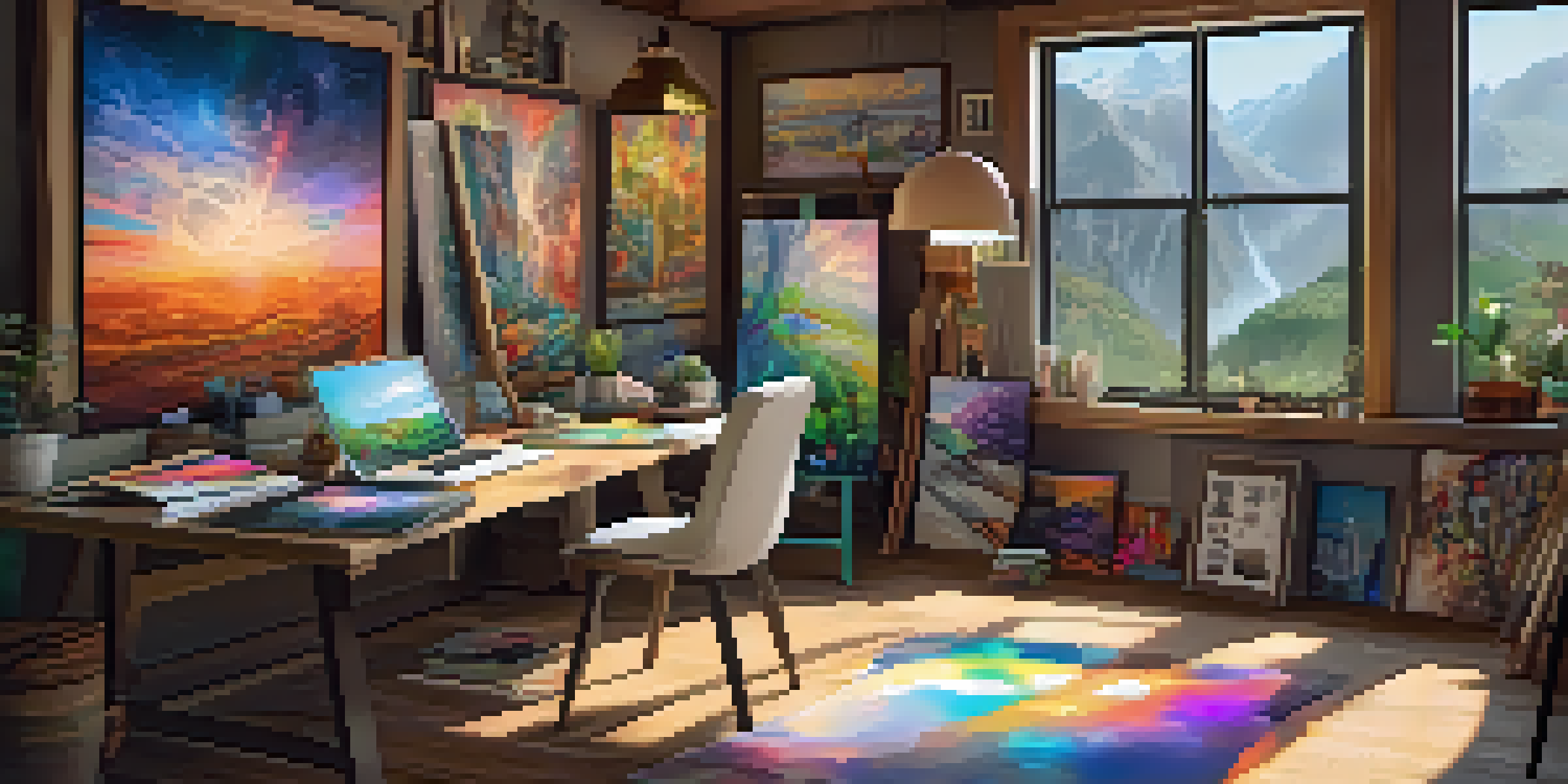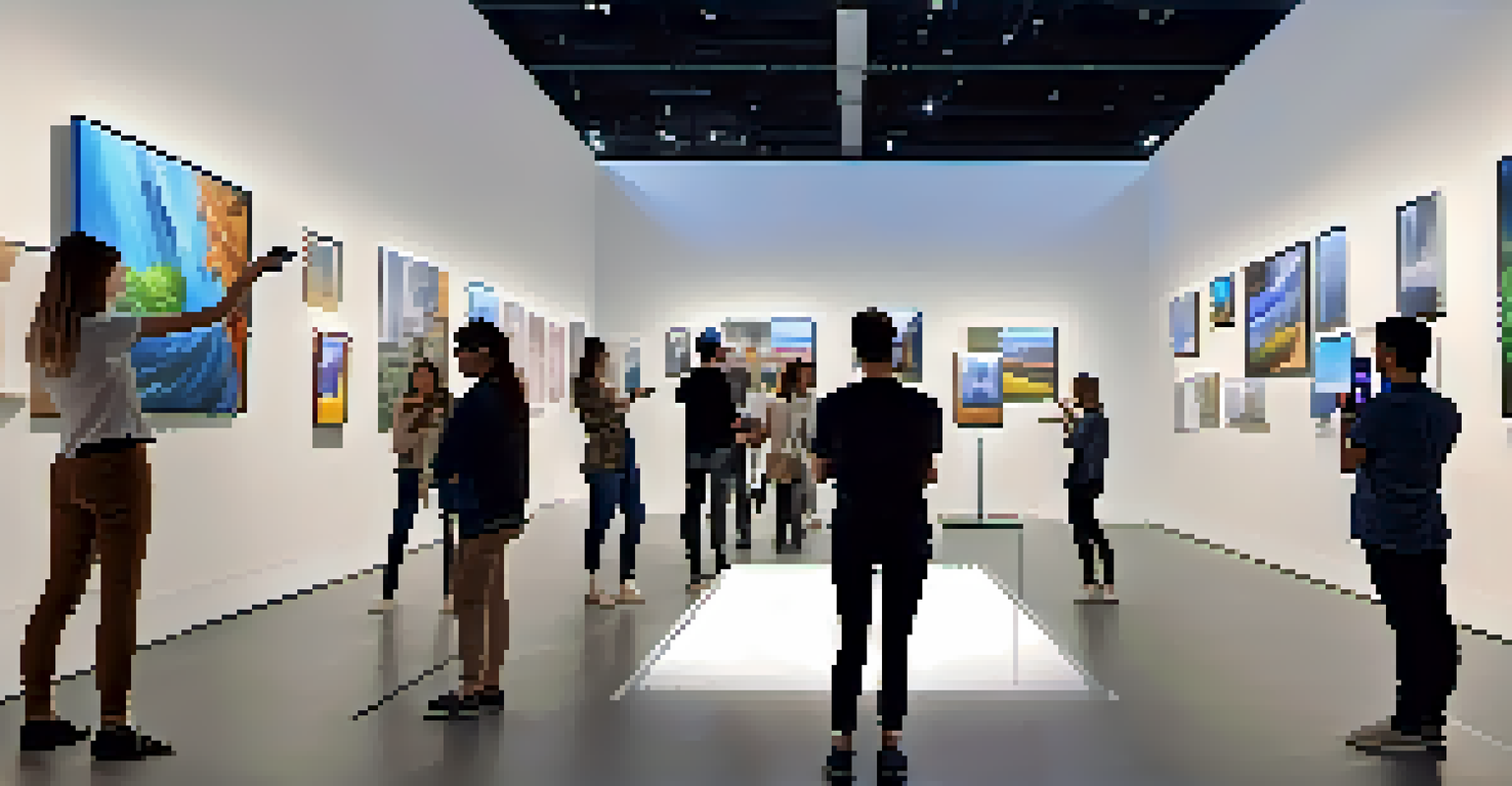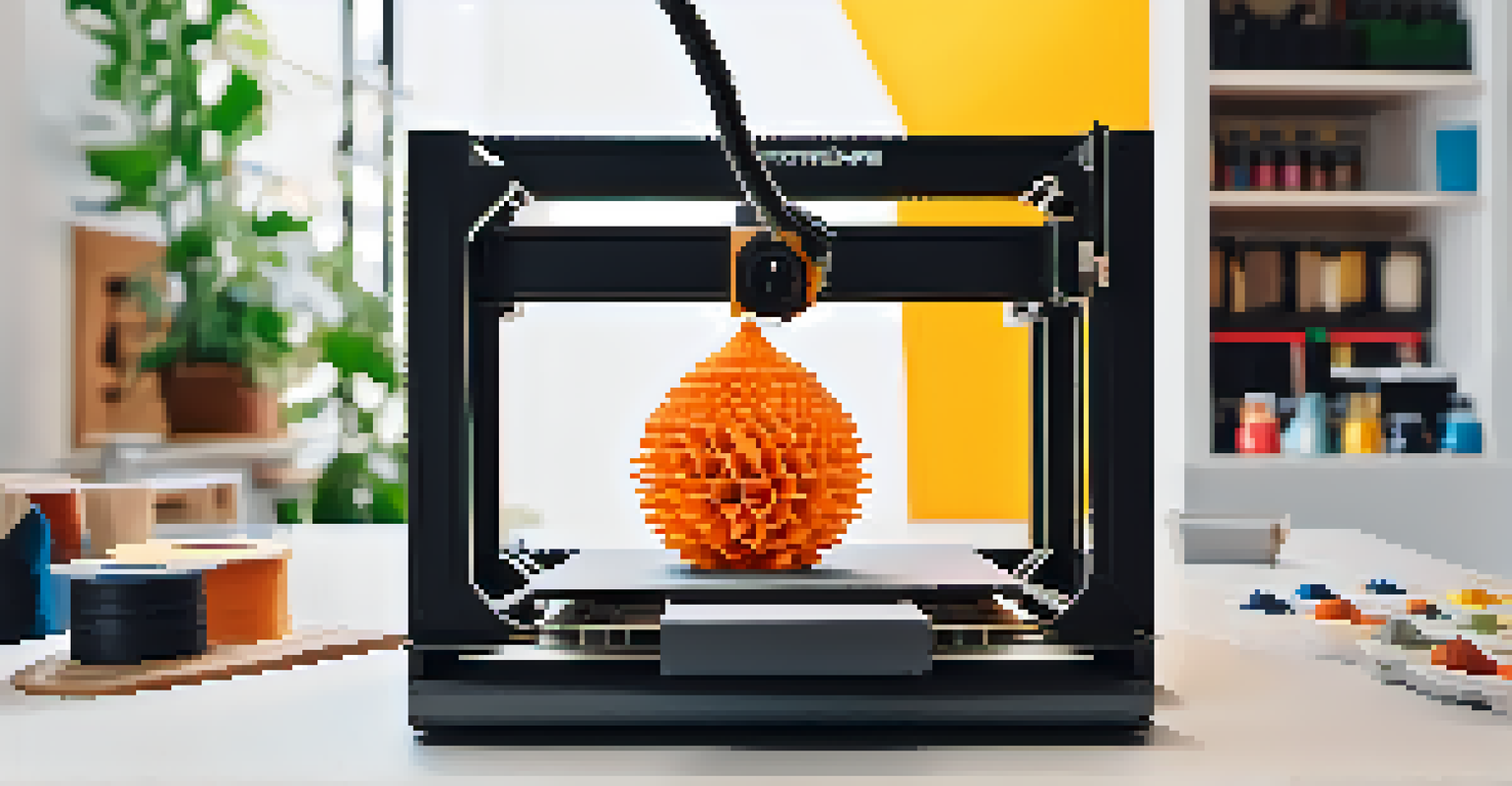The Role of Technology in Modern Experimental Painting Methods

The Evolution of Painting Techniques Through Technology
Painting has come a long way from traditional methods, and technology is at the forefront of this evolution. Artists now have access to digital tools that allow for unprecedented creativity and experimentation. For instance, digital painting software offers features that can mimic real-world textures while also providing options that would be impossible with physical paint.
Every artist dips his brush in his own soul, and paints his own nature into his pictures.
As artists explore these digital realms, they can blend traditional techniques with modern technology. This hybrid approach not only widens the scope of what can be created but also invites new audiences who appreciate the blend of old and new. It's fascinating to see how a simple brushstroke can be transformed into a digital masterpiece.
In essence, technology has redefined the canvas itself, allowing for a broader interpretation of what painting can be. With every new tool that emerges, artists are encouraged to push boundaries and redefine their creative processes.
Digital Tools: Enhancing Artistic Expression
Digital tools have revolutionized how artists express their ideas and emotions. Programs like Adobe Photoshop and Procreate enable artists to manipulate colors, shapes, and textures with ease, allowing for a level of precision that traditional methods can’t match. Imagine being able to undo any mistake with a simple click — that’s the power of technology in art.

Moreover, these tools often come with a plethora of brushes and effects that can emulate various styles, from watercolor to oil painting. This variety encourages artists to experiment freely without the fear of wasting materials or ruining their work. The ability to create layers also means that artists can play with concepts before committing to the final piece.
Tech Transforms Artistic Expression
Digital tools and techniques are revolutionizing how artists create, blending traditional methods with innovative technology.
Ultimately, digital tools do more than just enhance capabilities; they empower artists to explore their creativity in ways that were previously unimaginable. This shift opens the door to innovative art forms that challenge traditional definitions.
Augmented Reality: A New Dimension in Art
Augmented reality (AR) is another exciting technological advancement that is reshaping modern painting methods. By overlaying digital images onto the physical world, artists can create immersive experiences that engage viewers in unique ways. Imagine walking through a gallery and seeing paintings come to life right before your eyes.
The best artist has no conception that a marble block does not contain within itself, but he must bring it forth from the stone.
This interaction not only captivates audiences but also prompts them to experience art in a more dynamic fashion. For example, an artist might create a static painting that, when viewed through an AR app, reveals layers of hidden imagery or animated elements. This blend of physical and digital encourages deeper engagement with the artwork.
As AR technology continues to evolve, it’s likely that we’ll see even more innovative applications in the art world. The potential for storytelling and emotional connection through these methods is vast, paving the way for a new era of artistic expression.
3D Printing: Redefining Sculpture and Mixed Media
While painting typically involves two-dimensional surfaces, technology has introduced 3D printing, which allows artists to create sculptures and mixed media works with unprecedented ease. This method can transform a digital design into a tangible object in a matter of hours, opening up new avenues for creativity. Imagine being able to print your painting in three dimensions, giving it depth and texture never before possible.
Artists can experiment with various materials, from plastics to metals, expanding their artistic vocabulary. This innovation not only enhances traditional painting practices but also encourages collaboration across disciplines, merging painting with industrial design and architecture. It’s a fascinating intersection that inspires fresh ideas.
AR Enhances Viewer Engagement
Augmented reality is creating immersive experiences that allow audiences to interact with art in dynamic and captivating ways.
As 3D printing technology advances, it will likely lead to even more imaginative expressions in the art world. The boundary between painting, sculpture, and design continues to blur, inviting artists to explore the vast possibilities of their craft.
Social Media: A Platform for Artistic Exposure
In today's digital age, social media plays a vital role in how artists share their work and connect with audiences. Platforms like Instagram and TikTok have become essential tools for painters to showcase their creative processes and finished pieces. This instant access to a global audience allows artists to gain exposure and build their brands like never before.
Moreover, social media encourages interaction and feedback, enabling artists to refine their techniques based on viewer responses. For example, a time-lapse video of a painting process can draw in viewers, creating a community around the artwork. This connection fosters a sense of belonging and support among artists and art lovers alike.
Ultimately, social media has transformed the art world into a more collaborative and accessible space. It’s not just about showcasing talent; it’s about building relationships and engaging with a diverse audience.
Artificial Intelligence: Collaborating with Creativity
Artificial intelligence (AI) is increasingly finding its way into the creative process, acting as a collaborator rather than a replacement for artists. AI programs can analyze vast amounts of data to create unique styles or suggest color palettes, allowing artists to explore new creative avenues. This partnership encourages innovation and experimentation in ways that challenge traditional notions of authorship.
For instance, artists can use AI to generate concepts that they might not have considered otherwise, leading to unexpected and striking results. As the technology continues to evolve, it may even inspire entirely new genres of art that blend human creativity with machine learning.
Sustainability Through Innovation
Technological advancements are enabling artists to adopt sustainable practices, reducing waste and promoting eco-friendly methods in their work.
By embracing AI, artists can push the boundaries of their work and redefine the role of the artist in the creative process. The future of art may lie in this collaboration, where human intuition meets the power of technology.
Sustainability in Art: A Tech-Driven Solution
Sustainability is becoming increasingly important in all areas of life, including art. Technology plays a significant role in helping artists reduce waste and create more environmentally friendly practices. For example, digital painting eliminates the need for physical materials, while innovations in paint production are leading to eco-friendly options.
Moreover, artists are using technology to track the environmental impact of their work and make informed decisions. This might include using recycled materials in their creations or implementing energy-efficient processes in their studios. It's a thoughtful approach that aligns with the values of both artists and their audiences.

As sustainability continues to gain traction, technology will likely play a crucial role in shaping the future of art. Artists who embrace these practices not only contribute positively to the environment but also inspire others to consider the impact of their creative choices.